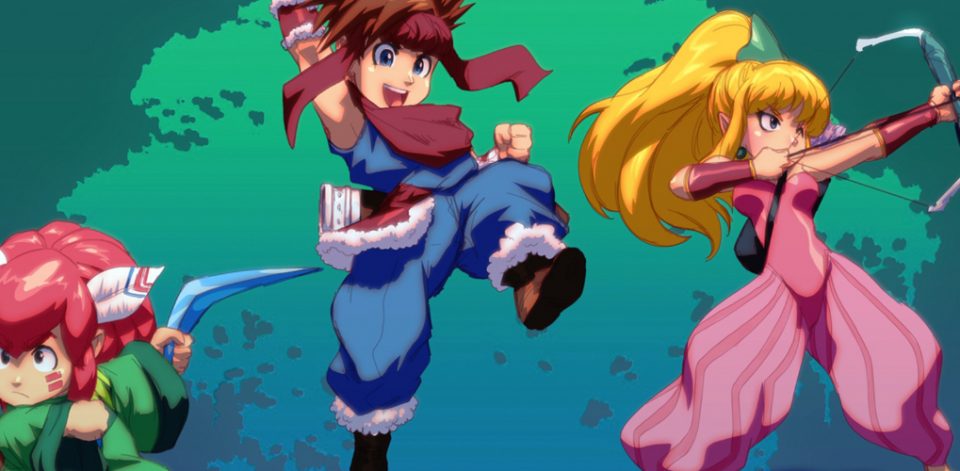
By Marilu Medrano on April 10, 2017
The video game industry is not particularly known for its strides in embracing feminist culture, or for fostering a more diverse and inclusive environment. Fighting the culture wars in the gaming industry can seem really high stakes, if not futile at times. The power that video games possess to forge new imaginaries and new possibilities and to shift current cultural paradigms, however, far outweighs the decision to stay passive, disinterested, or impartial to the culture wars. Former editor of The Times’s Op-Ed page, Chris Suellentrop, writes about the power of video games, noting that among many things, video games allow “us to adopt new identities and grant us new ways of seeing ourselves… Representation in interactive media may be even more important than it is in linear entertainment. In video games, players describe ourselves as the digital avatars we control on a screen. We say ‘I died,’ not ‘he died.’” In short, what Suellentrop refers to here is the fact that, unlike mediums like literature and film, in video games, you yourself are implicated in the meaning-making process. You become instantaneously immersed in the medium’s world in a much more interactive way.
Digital interactive platforms could benefit the entire humanities. If fields such as literature and languages claim that one of the values of humanist inquiry lies in the ability of humanistic media to challenge and broaden one’s epistemic and social horizons, then digital media arts, such as video games, should be included in that conversation. I myself am a Ph.D. candidate in English, but ironically enough, literature was not the medium that introduced me to a feminist ideology — a video game by the name of Secret of Mana (1992) did.
This early 90’s game flipped the script of the damsel in distress by having a female lead in a group of three (including a male and an androgynous sprite) on a quest to save the world. The noble lady’s love interest, Dyluck, (a general in the resistance army) had been kidnapped by the evil dark sorcerer who planned to steal and usurp his mortal body. Rather than subscribe to a narrative of “waiting” (waiting in hopes for her love’s return or for her father to marry her off), she decides to go and rescue him herself with the help of the male protagonist and the sprite. Although the female character is represented as a typical white, heterosexual, upper class, able-bodied, etc. female, the experience of playing a woman warrior on a quest to save the world and her love interest was nonetheless definitely one of my earliest exposures to feminism — which to me was amazing given that (a) as a Latina immigrant, feminism was not exactly an encouraged household topic, and (b) feminism was and still isn’t the game industry’s leading cultural ideology. This video game allowed me to enact and embody feminism through an avatar who, although bearing some aesthetic similarities to the classic iconic Mario Bro. Princess Peach (the pink dress, red blonde hair), was a warrior woman, and was no peach.
The game’s narrative structure itself, with its multiple narrative possibilities, is set up in such a way that, regardless of which narrative path you take, beating the game and saving the world is impossible without her character. So beyond the possibility of using video games as conversation starters about gender and race, the non-linear structure of narrative-driven role playing games (such as Depression Quest, Until Dawn, Heavy Rain, Life is Strange) could also further push the envelope or add insight to the areas of narrative studies. Video games might not work for all humanists, but they certainly did for me. Video games created social awareness and allowed me to enact and engage with various points of view that were completely different from my own in a way that neither literature nor film ever really did or could. Furthermore, they can be used as a versatile pedagogical tool in the classroom. The nonlinear gameplay of the role-playing genre allows players to explore multiple narrative sequences along a given timeline through diverse perspectives — thus allowing them to ultimately alter and experiment with historical events. Designing a narrative that offers these options helps students more easily grasp a broader, more complex notion of history as the idea of numerous stories that are constantly competing to be the dominant narrative. I think video games would give the humanities a 1up!
Image: 531938.jpg by Wallpaper Abyss – Alpha Coders. Image copyright is held by the original owner. (https://images7.alphacoders.com/531/531938.jpg)
Marilú Medrano is a Research and Instructional Technology Consultant (RITC) at the UCLA Center for Digital Humanities and a PhD Candidate in the Department of English. Her work focuses on performance and mestizaje in 20th/21st century literature of the Americas. She loves playing video games and is currently crafting a video game that reimagines the Americas colonial history (Meso-America region) beginning with the story of a young Malinche (Malinalli/Malintzin).
Resources:
- Secret of Mana: https://en.wikipedia.org/wiki/Secret_of_Mana
- Depression Quest: http://www.depressionquest.com/
- GamerGate controversy: http://www.npr.org/sections/alltechconsidered/2014/09/24/349835297/-gamergate-controversy-fuels-debate-on-women-and-video-games
- Heavy Rain: https://en.wikipedia.org/wiki/Heavy_Rain
- Life is Strange: http://life-is-strange.wikia.com/wiki/Life_is_Strange_Wiki
- Super Mario Run’s Not-So-Super Gender Politics: https://www.nytimes.com/2016/12/22/opinion/super-mario-runs-not-so-super-gender-politics.html?_r=0
- Until Dawn: https://www.playstation.com/en-us/games/until-dawn-ps4/
